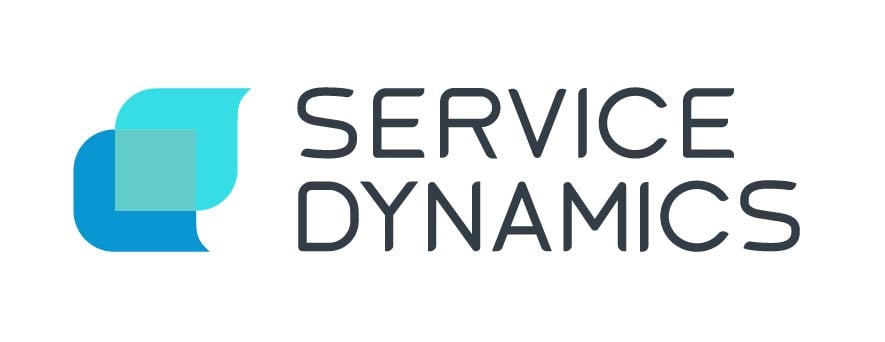You are probably well aware of the benefits of IT Service Management (ITSM) and Enterprise Service
Management (ESM). They allow processes to be structured more efficiently and requests to be handled quickly and easily, increasing service quality for IT and non-IT processes. Of course, this doesn't mean that you can install an ITSM or ESM solution and just forget about it.
Due to the ongoing changes in both the IT landscape and your organisation, it’s advisable to give your Service Management solution a once-over every now and again. Does it meet the changing needs of the environment? Is there sufficient capacity for growth, or is it already pushed to its limits? And is it in line with today's reality and business objectives?
To help you re-evaluate your current solution, we have prepared a checklist of items to assess:
1. Does your ITSM solution provide adequate flexibility?
Is your organisation still the same as when you first implemented a Service Management tool? Probably not. You may have grown since then, made some acquisitions, and are now operating across multiple sites. Or have you decided to focus activities more on supporting the core business? Whatever direction your organisation takes, your Service Management solution must be able to keep up.
The organisation isn’t the only thing that can change—the objectives of the IT department are also variable, as are the organisation's plans that extend beyond IT scenarios. While your current Service Management tool may have been adequate initially, the need often arises to provide the same type of support to other organisational processes. Whatever the case, organisations are always changing, and it's useful if your Service Management solution can adapt to suit new circumstances. Scaling capacity and licensing are examples of important factors, but the flexibility of the solution itself is another key aspect.
How easy is it to install updates or new capabilities? Does every background modification require programming skills, or can they be configured without any coding? All it takes are a few simple checks to determine whether your Service Management solution is flexible enough to tackle the future.
2. Is the modality still adequate?
Service Management tools come in a variety of forms. When buying a first system, usually much time is spent looking at which modality will work best: cloud, on-premise, or a combination of both. If the organisation or its objectives change, the chosen technology may no longer be adequate. If you are currently on-premise, switching to a cloud solution (SaaS) may be worth contemplating given financial considerations between capital and operational expenses, or ongoing administration requirements. Technology choices can continue to change as time goes on. If this applies to you, then it’s worthwhile evaluating solutions that come in both on-premise and SaaS forms. That way it's easy to switch from one to the other without having to redesign the entire architecture and setup.
One important question in this respect is how a potential switch from on-premise to SaaS (or vice versa) will impact your current configuration. Service Management solutions should never stand in the way of the organisation or its choices.
3. Is there enough scope for innovation or improvement?
The world around us is changing, and the same goes for your Service Management solution. Your organisation's software needs may be different now, perhaps simply because there are so many new opportunities. The last thing you want is a solution that is actually already obsolete. Users will pick up on it quickly enough, and if the tooling is no longer working for them, they will go in search of other solutions that do. That is precisely what Service Management aims to avoid. So ask yourself the question: can your Service Management tooling move with the times? Does it offer scope for innovation and new applications so that it can continue to offer benefits not just now, but in the future as well?
Artificial intelligence solutions are one option worth considering. Tickets can be categorised automatically according to various characteristics, after which they are distributed by the “augmented analyst” according to the correct flow, and users are informed of when they can expect a response. This system saves a lot of manual work at the Service Desk!
Including detailed device and asset information is another option worth considering. Providing background information in the moment on a user’s device can speed up incident resolutions and reduce time spent on non-necessary activities. In a recent survey, almost half of IT professionals stated they spend time fixing devices still under warranty, but they didn’t know that at the time.
Another frequent request is for multi-channel availability—not only via a self-service portal on a laptop or desktop, but also via smartphone apps or simply by telephone. The need is understandable, but the Service Desk must never be overloaded and telephone calls in particular can be extremely time-consuming. It’s wise to automate this aspect using voice automation. Caller ID will let you know immediately who is calling, and calls can be redirected to the right place based on selections made in the audio menu.
Integration with the Service Management solution means forms can be prepopulated without having to rekey information, along with relevant caller information. This places less pressure on the service desk, while allowing for 24/7 availability and the provision of immediate (and even automated) service.
4. Can obsolete tooling be easily phased out?
It’s not only the Service Management tooling that requires periodic evaluation; the lifecycle of the integrated applications is also limited. Is your architecture structured in such a way that obsolete applications can be phased out and replaced with new ones easily?
A properly structured Service Management solution will always take future development into consideration. The system will usually go live with links to existing applications, but as soon as these are no longer adequate, it must be easy to switch to new ones or ultimately replace a collection of separate applications with a single asset-management or endpoint-management solution. The capacity to replace obsolete tooling is one measure of your solution's flexibility, which should be made as high as possible.
5. Does the ITSM solution safeguard efficiency and compliance?
Comprehensive process automation increases efficiency, provides immediate customer assistance, and also safeguards compliance. A flexible Service Management solution that can adapt to suit the needs and wishes of your organisation is therefore essential.
Compliance isn’t something you want to have to worry about all the time. Data protection legislation and IT security requirements are both subject to change, for example, and these are matters that should be handled automatically by Service Management. So every few years it's a good idea to check whether your solution is still doing its job.
How did your Service Management solution fare?
If you answered “no” to any of the above questions, then it may be wise to investigate whether an
alternative solution might be more suitable for your organisation's needs. If you're interested in having a chat, get in touch.

Content first written and published by Ivanti - download pdf

